CryptFile2 Ransomware is an infection that was first discovered by malware analysts in March 2016. The 1st version of this infection was spread mainly with the exploit kits nuclear and neutrino, and she is quite widespread. Our research team has discovered a new version of this infection recently, and this seems to be even more aggressive. To distribute of this version your developers uses a mass-spam E-mail attack, and it has been found that thousands of spam emails, which include the malicious threat, have been shipped since early August. It is noteworthy that this version of the malicious Ransomware aims not to regular users. Instead, it is their goal the national and local governments in the United States, educational organizations, insurance, health and telecommunications companies. Of course, this does not mean that you must not remove the CryptFile2 Ransomware, even if you are just a regular Windows user.
The damaged spam emails spreading the CryptFile2 Ransomware, include usually fake information in conjunction with American Airlines, an American airline. If you an E-Mail with a subject line like “AmericanAirlines discount” (“American Airlines discount”) or “Free fly with AmericanAirlines” (“free flying with American Airlines”) find, open it in any case. Because the Ransomware can be updated and new versions could be developed, open any suspicious spam emails regardless of their subject lines or their content. Keep in mind that the malicious file of CryptFile2 Ransomware is probably represented as innocuous .doc file. If you open this file, the malicious threat runs and copies the file to the folder % appdata %. In our case, the malicious file was “ChromeFlashPlayer_ [user ID] .exe” called. If you delete this file in a timely manner, you may be able to protect your files. Unfortunately the Ransomware is secretly and most users don’t notice it until it reveals itself by using the intimidating ransom demands.
“HELP_DECRYPT_YOUR_FILES. TXT”is the file that represents the ransom of malignant CryptFile2 Ransomware. This TXT file is added at each point that contains encrypted files, but she could be placed in other folders. This ransom note informs you that your personal files with the RSA-2048 key encrypted (a very popular encryption method) and the decryption is possible only if you have a private key. How do you get this key? According to the message, you must send your ID number – which is given below – to the specified E-Mail addresses (enc3@usa.com, enc3@dr.com, enc3r@usa.com, or enc3r@dr.com). As you have probably already noticed, your ID and the email address are added to the encrypted files. ‘. id_ [your ID] _email_ [email address] .scl ‘ is an extension that adds to each damaged file (for example picture.jpg.id_a0123456abcd0a0__email_enc3@dr.com_.scl). Have you tried to remove the extension? This does not yet make no effort?
It is obvious that the developer of the CryptFile2 Ransomware would like to make money, and unfortunately, it is likely that he gets what he wants. At the moment, there are no third party decryptor for these Ransomware, which means that you either follow the demands of cybercriminals, or lose your files. Fortunately users use nowadays file backup systems, such as for example online clouds of storage, to protect their files. You may think about payment of ransom for the case that you have not saved your files. We do not recommend this because you might spend your money for nothing in return. If you are however safe to pay the ransom, and are willing to take the risk, please note that the cybercriminals you expect to be within 72 hours. If you do not, the ransom may be doubled.
How can you delete the CryptFile2 Ransomware from your operating system? This is not as difficult as you might think. After tests in our internal laboratory we have found out that you must delete the malicious executing file along with the directory values associated with it. If you however do not like to work in the Windows directory – what is a complicated task, because a mistake could cause even more problems you should download instead automated malware detection and removal software. If you use this software, you must worry more to other existing infections or malware attacks, which may emerge in the future. Of course you need to do this, if you divorced for the manual removal options.
Remove the CryptFile2 Ransomware
Don’t forget to scan your operating system with a legitimate current malware scanner.
Warning, multiple anti-virus scanners have detected possible malware in CryptFile2 Ransomware.
| Anti-Virus Software | Version | Detection |
|---|---|---|
| McAfee | 5.600.0.1067 | Win32.Application.OptimizerPro.E |
| VIPRE Antivirus | 22224 | MalSign.Generic |
| K7 AntiVirus | 9.179.12403 | Unwanted-Program ( 00454f261 ) |
| Tencent | 1.0.0.1 | Win32.Trojan.Bprotector.Wlfh |
| VIPRE Antivirus | 22702 | Wajam (fs) |
| Qihoo-360 | 1.0.0.1015 | Win32/Virus.RiskTool.825 |
| Kingsoft AntiVirus | 2013.4.9.267 | Win32.Troj.Generic.a.(kcloud) |
| NANO AntiVirus | 0.26.0.55366 | Trojan.Win32.Searcher.bpjlwd |
| McAfee-GW-Edition | 2013 | Win32.Application.OptimizerPro.E |
| ESET-NOD32 | 8894 | Win32/Wajam.A |
| Baidu-International | 3.5.1.41473 | Trojan.Win32.Agent.peo |
| Dr.Web | Adware.Searcher.2467 |
CryptFile2 Ransomware Behavior
- Steals or uses your Confidential Data
- Installs itself without permissions
- CryptFile2 Ransomware Deactivates Installed Security Software.
- Redirect your browser to infected pages.
- CryptFile2 Ransomware Connects to the internet without your permission
- Changes user's homepage
- CryptFile2 Ransomware Shows commercial adverts
- Distributes itself through pay-per-install or is bundled with third-party software.
- Shows Fake Security Alerts, Pop-ups and Ads.
- Slows internet connection
- Integrates into the web browser via the CryptFile2 Ransomware browser extension
- Modifies Desktop and Browser Settings.
- Common CryptFile2 Ransomware behavior and some other text emplaining som info related to behavior
CryptFile2 Ransomware effected Windows OS versions
- Windows 10
- Windows 8
- Windows 7
- Windows Vista
- Windows XP
CryptFile2 Ransomware Geography
Eliminate CryptFile2 Ransomware from Windows
Delete CryptFile2 Ransomware from Windows XP:
- Click on Start to open the menu.
- Select Control Panel and go to Add or Remove Programs.
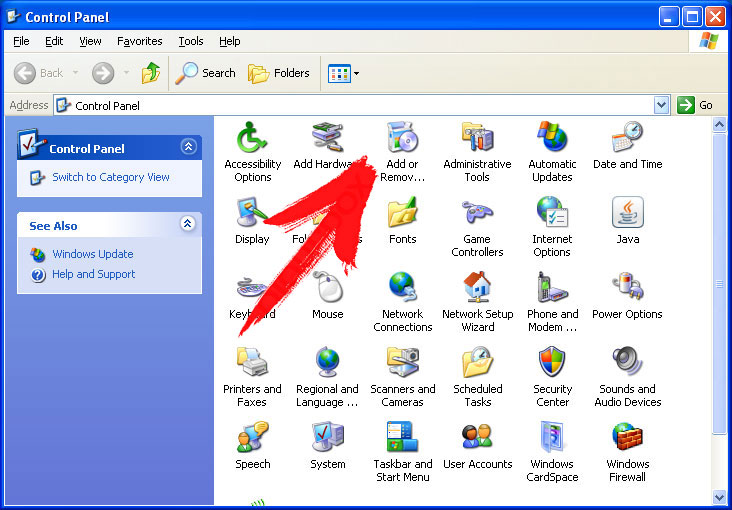
- Choose and remove the unwanted program.
Remove CryptFile2 Ransomware from your Windows 7 and Vista:
- Open Start menu and select Control Panel.

- Move to Uninstall a program
- Right-click on the unwanted app and pick Uninstall.
Erase CryptFile2 Ransomware from Windows 8 and 8.1:
- Right-click on the lower-left corner and select Control Panel.
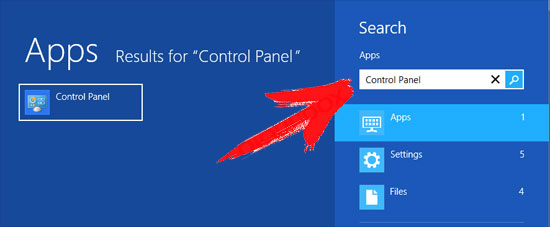
- Choose Uninstall a program and right-click on the unwanted app.
- Click Uninstall .
Delete CryptFile2 Ransomware from Your Browsers
CryptFile2 Ransomware Removal from Internet Explorer
- Click on the Gear icon and select Internet Options.
- Go to Advanced tab and click Reset.

- Check Delete personal settings and click Reset again.
- Click Close and select OK.
- Go back to the Gear icon, pick Manage add-ons → Toolbars and Extensions, and delete unwanted extensions.
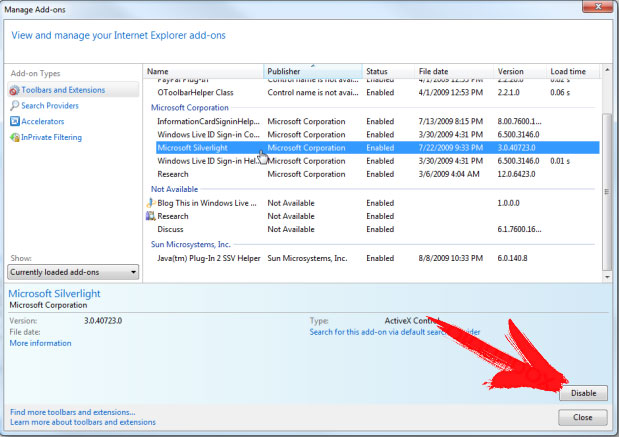
- Go to Search Providers and choose a new default search engine
Erase CryptFile2 Ransomware from Mozilla Firefox
- Enter „about:addons“ into the URL field.
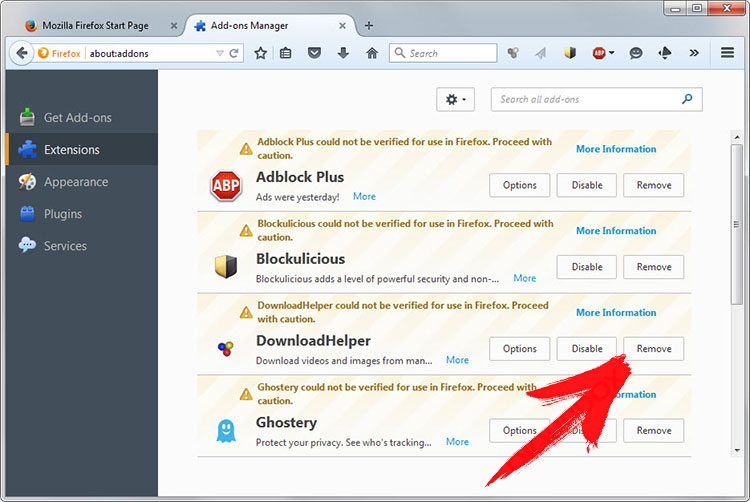
- Go to Extensions and delete suspicious browser extensions
- Click on the menu, click the question mark and open Firefox Help. Click on the Refresh Firefox button and select Refresh Firefox to confirm.
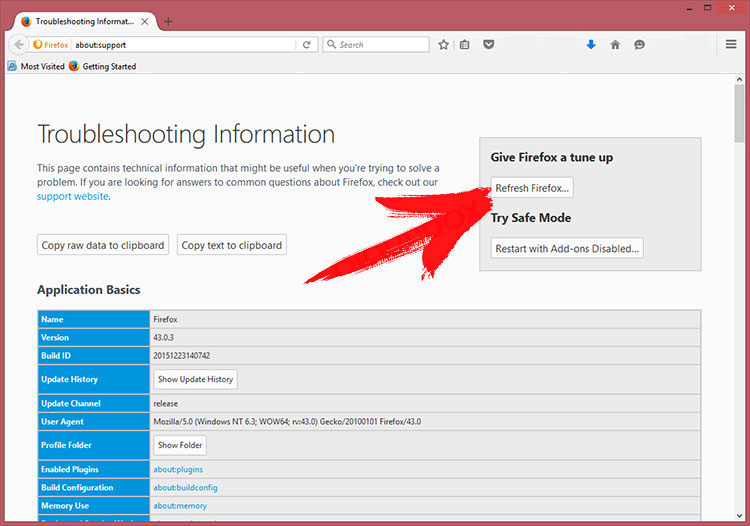
Terminate CryptFile2 Ransomware from Chrome
- Type in „chrome://extensions“ into the URL field and tap Enter.
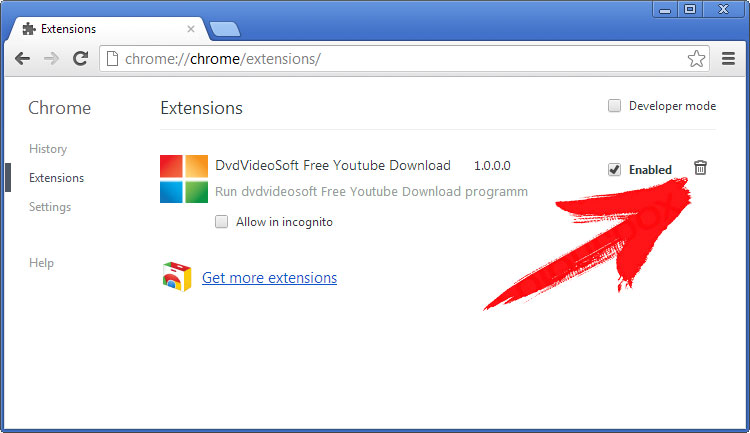
- Terminate unreliable browser extensions
- Restart Google Chrome.
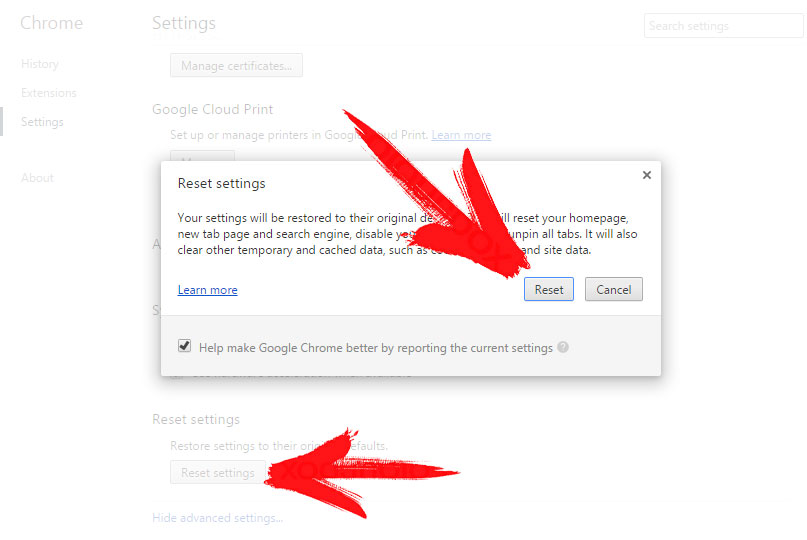
- Open Chrome menu, click Settings → Show advanced settings, select Reset browser settings, and click Reset (optional).